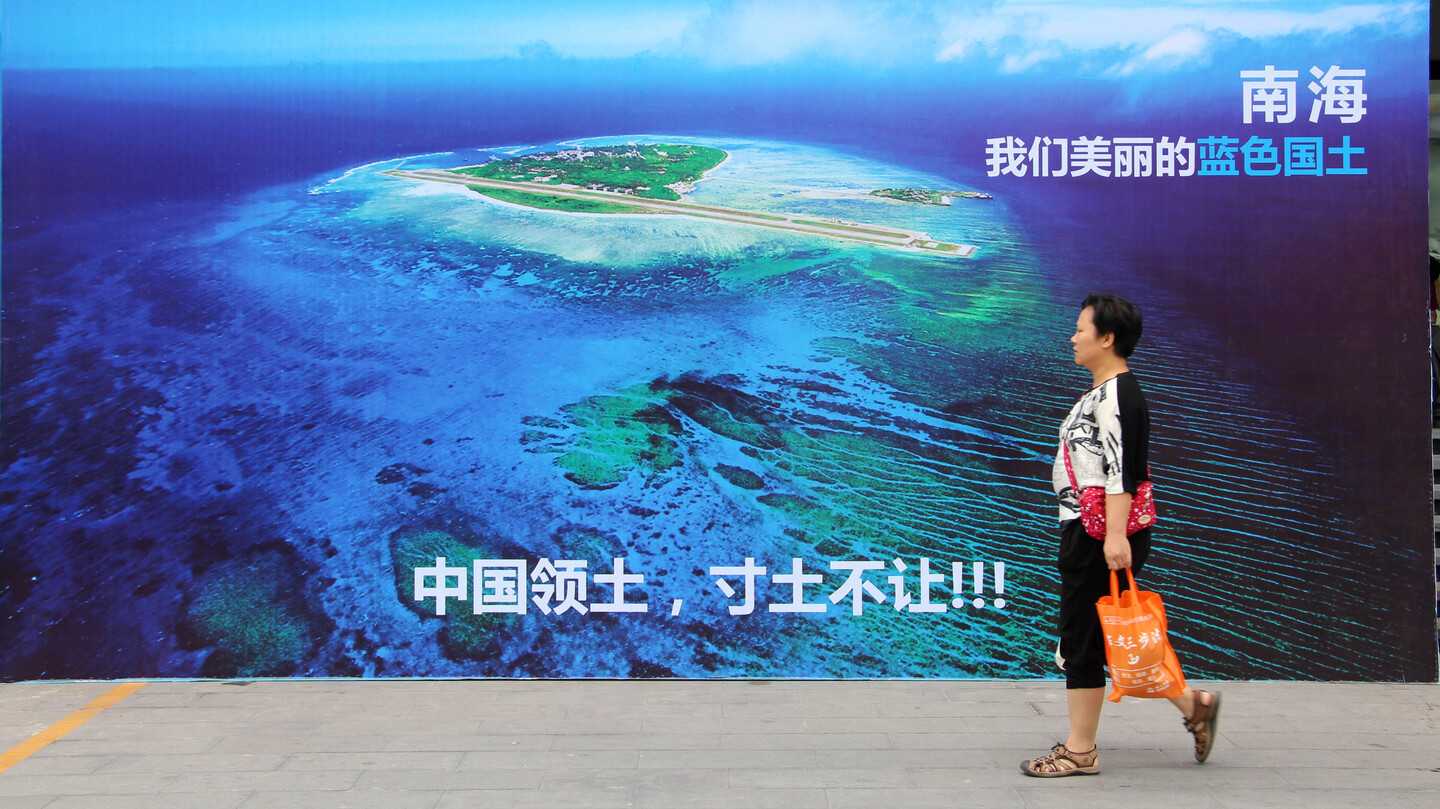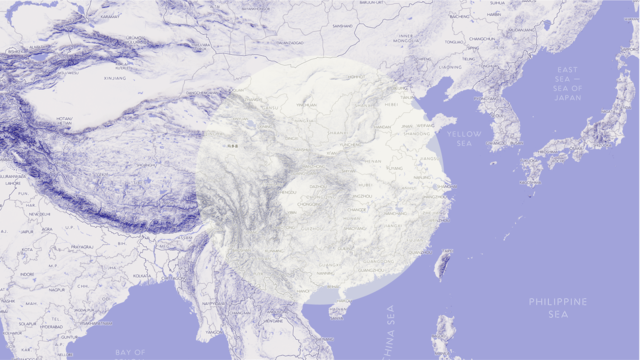International Law with Chinese Characteristics - The South China Sea Territorial Dispute

China actively participated in the drafting of the United Nations Convention on Law of the Sea (UNCLOS) and ratified it in 1996. The domestic legal system of China also contains a set of laws such as the Law on the Territorial Sea and Contiguous Zone (1992), and the Law on the Exclusive Economic Zone (EEZ) and the Continental Shelf (1998).
INTRODUCTION
However, the Chinese interpretation of the UNCLOS has raised legal and security challenges in South East Asia. It started with a territorial dispute between coastal states over the maritime space in the South China Sea (SCS) and recently developed into the geopolitical rivalry between China and the United States (US) over the maintenance of the rulesbased order. Namely, in 2022, Lloyd Austin, the US Secretary of Defense, pointed out China’s intentions to reshape its region and the international order so that it would align with its authoritarian preferences. Under Xi Jinping’s worldview, two of the ten concentric circles of interest are “to secure China’s maritime periphery in East Asia and the West Pacific” and “to rewrite the global rules-based order.”
The dispute has a two-fold character. Firstly, China asserts its sovereignty over significant parts of the maritime space depicted in the “nine-dash line” map. It covers roughly two million square kilometers of land features, including the Paracel Islands, the Spratly Islands, and the Scarborough Reef. Secondly, China repeatedly claims its maritime jurisdiction over the territorial sea, the EEZ, and the continental shelf, which overlaps with the EEZ of other coastal states, and thus it takes the maritime jurisdiction over these areas away from the relevant island groups.
In 2016, pursuant to the application of the Philippines concerning the SCS dispute, the Permanent Court of Arbitration (PCA) adopted a decision in favor of the Philippines. The PCA rejected the position of China, concluding that its claims of sovereignty over the nine-dash line based on historical rights had no legal basis in international law. It was a landmark event in which China blatantly declared the Arbitral Tribunal ruling null and void. China’s assertiveness in the region, particularly its militarization of islands in the SCS, has shifted the issue from a legal to a political one, thus raising concerns about its regional hegemonic ambitions. This behavior has also caused security concerns among Southeast Asian states and the US.
THE CHINESE APPROACH TO INTERNATIONAL LAW
The Chinese approach to and interpretation of international law are rational and realistic, and primarily connected with the national interests of China. Typically, the implementation of international law to domestic law must meet three particular criteria: (i) it must not challenge the legitimacy of the Chinese Communist Party; (ii) it should not hinder longterm economic growth and social stability; and (iii) most importantly, it should serve the protection of the state interests in the international arena – a rise of China must not be restrained by international law. Otherwise, China attempts to reinterpret and sometimes blatantly violate international law. Such behavior could be viewed as an attempt to change the international legal system in some fields vital to the Communist Party, such as trade, human rights, and maritime law. For instance, China has not ratified all conventions of the International Labor Organization as some of these conventions might contradict the socialist system.
It has recently started forming the so-called Chinese theory of international law in Chinese academia. The Communist Party, under the leadership of Jiang Zemin, drew its attention to mastering international law in order to uphold Chinese national interests in the 1990s. He stressed that “[w]e must be adept at using international law as a weapon.” Later, a new concept, fǎlǜ zhàn (法律战), was coined in the strategic doctrines of China. This concept means “legal battle” or “lawfare.” Simply put, it is a well-planned objective to incorporate Chinese characteristics into the theory of international law, deriving from China’s history, culture, values, Confucian philosophy, etc. Chinese legal scholars argue that international law is a Western concept and a product of the West’s dominance; its principles, concepts, and theories developed in the West. According to them, the law of sea, international humanitarian law, and intertemporal law represent Western values and ideas. The Chinese thinking believes that the full participation of the mainland in global governance necessitates the development of an international law with Chinese characteristics, which is a strategic objective to advance China’s national interests as a world-class power.
Although China is a party to multiple legally binding international instruments, Beijing is very cautious and selective in regard to two issues related to their ratification: state sovereignty and human rights. The former is connected with the territorial disputes of China, including the dispute over the South China Sea.
ARE THE CLAIMS OF CHINA REGARDING THE SCS LEGITIMATE?
China supports its territorial sovereignty claims with historical evidence dating back to the 2nd century BCE, and the Western Han Dynasty. In 2016, the Chinese government provided a compilation of literature on the fishery activities of Chinese people in the SCS. However, it consists of descriptive books that do not provide any legal basis. Interestingly, since 1950, China has often invoked the principle of historical rights in its territorial disputes with India.
Although the UNCLOS does not contain terminology like “historic rights,” two points are mentioned by China to prove the legality of its claim. On the one hand, Article 14 of the Law on the EEZ and Continental Shelf indicates that “…the provisions of this Act shall not affect the historical rights of the People’s Republic of China.” On the other hand, the UN Study on the Juridical Regime of Historic Waters concluded that three factors should be taken into account in claiming historic rights: (a) the exercise of authority; (b) the continuity of this exercise of authority; and (c) the attitude of foreign states. The last factor connotes the recognition of such a claim by other states – the acquiescence. The following conclusions could be inferred from the above: China’s historical claims are based on domestic law, not international law; other states disagree with these claims. For instance, the land features within the nine-dash line, specifically the Paracel Islands, the Spratly Islands, and the Scarborough Reef, have also been claimed by Vietnam, Taiwan, the Philippines, Malaysia, and Brunei. Had the claim of China been consistent with international law, it would have been recognized by other states.
Another issue is the maritime boundaries. Article 74(1) and Article 83(1) of the UNCLOS state that “…the delimitation of the continental shelf and the exclusive economic zone between States with opposite or adjacent coasts shall be effected by agreement on the basis of international law […] in order to achieve an equitable solution.” Therefore, the nine-dash line is inconsistent with the international law that requires China to negotiate maritime boundaries with other states in the SCS. China did not pursue any consultations with the states when issuing its notes verbales, including a map of the nine-dash line, to the Commission of the Limits of the Continental Shelf.
In 2021, the Chinese government enacted the China Coast Guard Law (CCGL). Certain provisions of the CCGL are problematic under international law. Articles 2(1) and 3 of the UNCLOS state that a state can claim sovereignty rights over territorial seas within 12 nautical miles from its baseline. In contrast, Article 3 of the CCG uses vague terminology, such as “maritime areas” under Chinese jurisdiction. These areas includevinternal waters, the territorial sea, the contiguous zone, the exclusive economic zone, and the continental shelf.
Nevertheless, China’s interpretation of “Chinese jurisdiction” implies that it has jurisdiction over all land features within the nine-dash line, which entails treating the island groups as a whole. This provision does not adhere to the rules of the UNCLOS. For example, as for the Spratly Islands, the sovereignty claim of China in regard to them exceeds the limits of the territorial sea. Besides this, some features, which include reefs, rocks, shoals, etc., cannot be treated as an island, so maritime claims are not relevant in such cases. The UNCLOS (Art. 121) sets two precise criteria for defining a feature as an island – it must be naturally habitable and above water at high tide. Although the reclaimed reefs and rocks fulfill the second criterion, it does not fulfill the first. In that sense, artificially constructed islands are not entitled to enjoy the rights of maritime zones as natural islands do.
Another problematic provision is that regarding maritime activities in the waters under Chinese jurisdiction. Article 21 of the CCGL authorizes the Chinese Coast Guard (CCG) to take coercive action against foreign military and sovereign immune vessels that do not comply with Chinese domestic law. Yet, the UNCLOS (Art. 96) grants complete immunity from the jurisdiction of another state to ships used in government non-commercial services. Under Article 22 of the CCGL, the CCG is allowed to use force in case of a violation of sovereignty in the waters of China. In such situations, the UNCLOS (Arc. 30) sets out that foreign warships should be required “to [l]eave the territorial sea immediately”.
The political nature of the maritime dispute between the US and China is driven by the restriction of innocent passage and freedom of navigation, which the US opposes through its Freedom of Navigation Operations (FONOPs). FONOPs seek to deter other countries from new maritime claims or to repudiate the existing ones. Although the US is not party to the UNCLOS, it treats some/most of its provisions as customary international law. During FONOPs, the US Navy can transit through another country’s territorial sea without notification or conduct military activities in its EEZ. This creates a real conundrum between mare liberum (open seas) and mare clausum (closed seas). China claims that its maritime features are under its jurisdiction, allowing foreign warships to enter its territorial sea only with permission. The US argues that it enjoys innocent passage and freedom of navigation in China’s territorial sea and EEZ under the UNCLOS. However, China argues that US military activities, such as intelligence gathering and surveillance, violate Article 87(2) of the UNCLOS.
China argued that the FONOPs challenge its sovereignty and security, resulting in threats to the peace and stability in the SCS. Once Tian Junli, the People’s Liberation Army Southern Theater Command, said that the US FONOPs “[s]eriously violate international law and norms of international relations.” The US Department of State published a study – Limits in the Seas № 150 – in 2022, which analyzed China’s sovereignty and historical claims based on the nine-dash line. It concluded that the maritime claims of China contradict international law. Chinese officials strongly expressed their objections to the analysis. According to them, it contains false legal arguments and political manipulation, as it undermines Chinese territorial sovereignty and maritime rights.
APPLICATION OF THE CHINESE ‘MAXIM’ TO THE ISSUE
One of the main reasons for the continuation of the SCS dispute is that Western politicians are hardly aware of how Chinese leaders think and act. Chinese thinking has the following maxim: “… above there are policies, but below, there are counter-policies” (上有政策, 下 有对策). The pledges made by Chinese leaders may no longer be considered valid if China believes that its national interests are being constrained. The Chinese behavior in the SCS dispute illustrates that this maxim is in effect in this case.
During the 2015 Obama-Xi summit, the US warned that militarizing islands in the SCS would cross a red line, and President Xi Jinping assured those in attendance that China would not militarize the Spratly Islands. However, a recent statement by the US Indo-Pacific Commander, Adam John C. Aquilino, suggests that China has fully militarized three artificial islands in the Spratly archipelago with missile systems, fighter jets, and 5,000 deployed troops. China has invested heavily in building a navy, coast guard ships, and a maritime militia to coerce its neighbors in the SCS; it did so with two strategic objectives : to create a maritime buffer and to control the sea regarding concerns over Taiwan. Additionally, building military bases could allow China to deploy submarine-launched ballistic missiles in the SCS that could target the West Coast of the US.
More importantly, China is wary of ominous security threats mainly because of the USled alliances in the region, such as the Quadrilateral Security Dialogue (Quad) and the Trilateral Security Pact (AUKUS). To give a more specific example, Australia announced its plans to acquire nuclear-powered submarines by the 2030s under the AUKUS, which sent a warning message to China. Meanwhile, the Chinese expansion in the SCS through creating artificial islands and naval military bases would grant a geostrategic advantage to China. As a result, it can carry out tactical military operations to seize Taiwan or in any possible military conflict with external powers.
THE GEOPOLITICAL IMPORTANCE OF THE SCS TO CHINA
As discussed in the previous part, the Chinese approach to international law is pragmatic, roughly speaking, based on the cost-benefit analysis. Thereupon, the law of the sea obstructs the Communist Party from achieving its core economic and political objectives. The realization of economic goals reinforces the legitimacy of the party and the current regime. Based on this logic, China remains aloof in reaffirming its claims even if such behavior is at odds with international law.
The analysis of Chinese behavior toward the SCS forms the following conclusion. China has four prominent interests in the SCS:
1. To safeguard its trade routes and exports by sea. The trade route through the SCS constitutes about $5 trillion of global trade. China is the largest exporter state that sends its exports through the SCS, and they amount to roughly $874 billion. More importantly, about 60 percent of Chinese trade is transported through the sea. Any disruptions in the sea trade route would potentially hinder the planned economic growth rates.
2. To gain more access to fisheries. In this regard, China addresses two problems: food security and employment. The internal consumer demand of China for fishery products accounted for 65 million tons or 45 percent of the global volume in 2020; more than 18 million Chinese people are employed in fishery-related jobs. Not to mention that China supplies about 35 percent of all aquatic products globally.
3. To attain potential natural resources in the long run to satisfy the voracious demand for oil and natural gas. The SCS is regarded as a potential source of crude oils and hydrocarbons. The study conducted by the US Energy Information Administration concluded that the sea potentially contains an estimated amount of 11 billion barrels of oil reserves and 190 trillion cubic feet of natural gas reserves. China is already the second largest importer of crude oil globally, with about 12.7 million barrels per day. That is why China has absolute control over 90 percent of resource-rich waters in the SCS.
4. To be a maritime power and strengthen its position in case of potential military conflicts. As discussed in the above part, this interest is associated with securing the mainland against external threats.
China is aware of the legality of the US FONOPs and the claims of other states in the dispute. However, the Chinese leadership is concerned that potential security threats in the near future could erode the legitimacy of the Communist Party and ultimately lead to its downfall if they are not addressed strategically. Therefore, the ambition of the Chinese leaders is to exert power and control in the region. International law, however, precludes the realization of this ambition; then China reinterprets the rules and norms to advance its
interests.
CONCLUSION
The recent developments in the SCS indicate that China is persisting with its territorial claims, despite opposition from the international community. China’s ultimate objective is to exercise control over the SCS and alter the strategic environment in the region. To this end, the Communist Party seeks to change international law by incorporating “Chinese characteristics” into the existing legal framework. In practice, this means that China selectively interprets and applies international law in a way that aligns with its strategic interests. For example, Chinese leaders and scholars have argued that the PCA ruling on the SCS was illegal, or that China is entitled to restrict innocent passage and freedom of navigation. In the worst-case scenario, the Chinese claims might eventually prevail. China is already the largest trading partner of the South East Asia states, which allows it to leverage its economic influence. Namely, China might offer substantial economic assistance to them, and, in return, expect their appreciation of the Chinese alleged maritime rights and historical claims. This shift in the balance of power could work to China’s advantage, which makes it a challenging situation for the US and the West more broadly.
Sardor Allayarov is a Research Assistant at the Institute of International Relations Prague.









